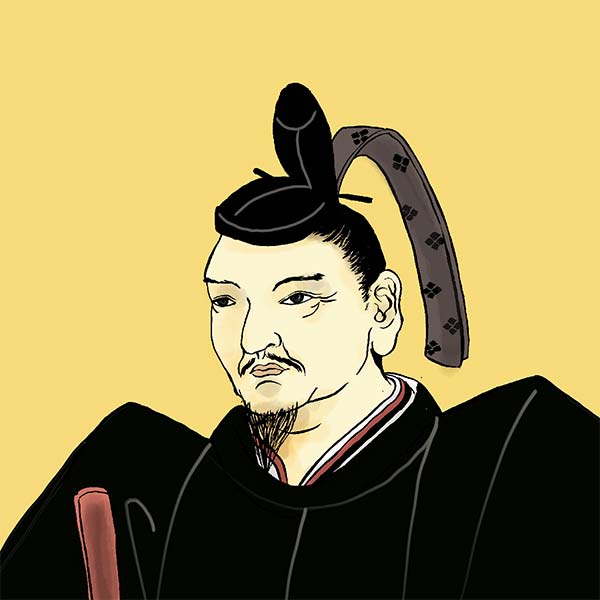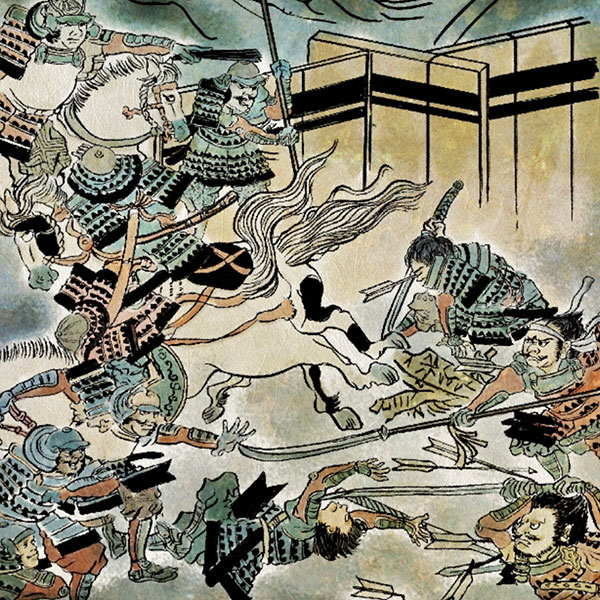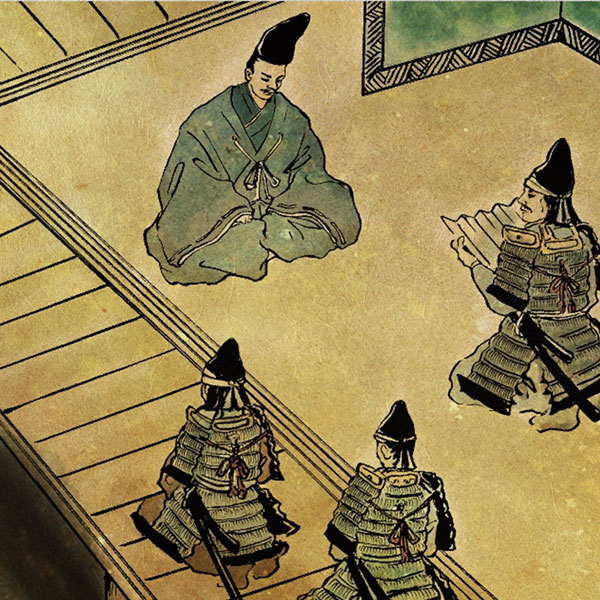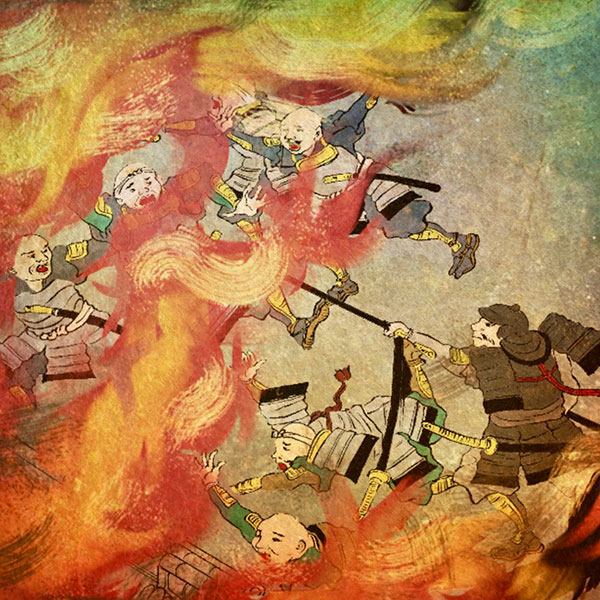Masamoto Hosokawa (2/2)The man who started the Sengoku period

Masamoto Hosokawa
- Article category
- biography
- name
- Masamoto Hosokawa (1466-1507)
- place of birth
- Kyoto
- Related castles

Nijo Castle
- related incident
Masamoto was a strong believer in the Yamabushi faith, and is said to have kept women away from him throughout his life because of his faith. In other words, there will be no heir to the Hosokawa Kitcho family.
In the same year that Yoshitane Ashikaga became Shogun, he adopted Masamoto Kujo's youngest son, Sumiyuki Hosokawa. Masamoto Hosokawa was unable to find an heir and adopted an adopted child, which later became one of the reasons why the Sengoku period entered.
The 11th Shogun Yoshizumi and the Meio Coup
Yoshitane Ashikaga became the 10th Shogun. Yoshitane, who was appointed as shogun, considered taking military action to increase his authority. This is the subjugation of daimyo who have hostile relations with the surrounding countrymen and Yoshitane's forces. Masamoto Hosokawa opposed the subjugation, which was being carried out in an unstable situation in the Kinki region, and did not participate.
Also, as mentioned earlier, there were some people who were dissatisfied with Yoshitane Ashikaga's appointment as shogun. This is Tomiko Hino. Masamoto Hosokawa, Tomiko Hino, and other feudal lords who opposed Yoshitane colluded. He then staged a coup d'état to oust Yoshitane Ashikaga, who had left the capital for subjugation, known as the Meio Coup.
On the night of April 22, 1493, Tomiko Hino and Masamoto Hosokawa rose up, and the 11th shogun Yoshizumi Ashikaga was born that day. Tomiko Hino and Masamoto Hosokawa, under the name of the new shogun Yoshizumi Ashikaga, ordered the daimyo who were participating in the punitive army to return to Tokyo, and the daimyo, who were upset, followed this order. The only person left under Yoshitane Ashikaga was the Kanrei, Masanaga Hatakeyama.
Yoshizumi Ashikaga, the 11th shogun supported by Masamoto Hosokawa, fought a major battle against the forces of Yoshitane Ashikaga, the 10th shogun in Kawachi Province, Masanaga Hatakeyama, the kanrei, committed suicide, and Yoshitane Ashikaga was imprisoned.
This ``Meio Coup'' was a rebellion in which the shogun was replaced due to the convenience of his vassal (Masamoto Hosokawa), but it also came to be considered a symbol of the decline of the Muromachi shogunate, and the beginning of the Sengoku period. I did.
In fact, from the 11th shogun Yoshizumi Ashikaga to the 15th shogun Yoshiaki Ashikaga, no shogun ever assumed office on his own or by a daimyo who supported the Muromachi shogunate, and no one could become shogun unless he was supported by a daimyo with great power. Ta.
Eternal confusion and Masamoto's end
The ``Meio Coup'' was a coup led by Hosokawa Masamoto and Hino Tomiko, and the shogun became the 11th shogun, Yoshizumi Ashikaga. Masamoto Hosokawa did not have a good relationship with the new shogun, Yoshizumi Ashikaga, but he established him as a shogun and spent more than 10 years under Masamoto Hosokawa's leadership.
During this time, the former shogun Yoshitane Ashikaga escaped from Kyoto from imprisonment and fled to Etshu, the territory of the murdered Kanrei Masanaga Hatakeyama. From there, he plotted his return to the rank of shogun. Yoshitane succeeded in drawing Enryaku-ji Temple on Mt. Hiei into his camp, but Masamoto Hosokawa controlled the system and burned down Enryaku-ji Temple.
While dealing with the abolished 10th shogun Yoshitane Ashikaga, Masamoto Hosokawa steadily gained power by incorporating local nationals from the Kin area and placing them under his control.
By the way, while Masamoto Hosokawa is conducting politics (in reality, he leaves the practical matters after deciding on policy to the deliberation of his vassals), he is immersed in training in Shugendo.
And Sumiyuki Hosokawa of the Kujo family, whom he adopted as an adopted child. Masamoto Hosokawa adopted Sumiyuki Hosokawa as his successor, but began to regret having adopted a child from outside the Hosokawa clan. Therefore, Sumiyuki Hosokawa was made the shugo daimyo of Tamba Province, but removed from being the successor, and Sumimoto Hosokawa was appointed from the Sanshu Hosokawa family of Awa Province. He also adopted Takakuni Hosokawa from the Yasu family, a tributary of the Hosokawa family. As a result, Masamoto Hosokawa has three adopted children.
However, the first adopted child, Sumiyuki Hosokawa, objected to this. Sumiyuki, who was adopted as the heir to the Hosokawa Kitcho family but was disinherited, held a grudge against Masamoto.
Then, in 1507, Hosokawa Masamoto was discovered by Sumiyuki's retainers Kozai Motonaga, Yakushiji Nagatada, and Takeda Magoshichi, who was Masamoto's bodyguard, while he was bathing in the bathhouse. He was attacked and assassinated (Eternal Derangement). Masamoto Hosokawa passed away at the age of 42.
Throughout Japan, clans fought each other, and this led to the Onin War. Even after the Onin War, the chaos throughout Japan did not subside, but discipline was barely maintained in the Kyoto area by Masamoto Hosokawa. However, Masamoto dies. From this point on, Japan entered the Sengoku period, which continued uncontrollably for 100 years.
The Ryohosokawa Rebellion and the beginning of the Sengoku period
- After the Hosokawa family
- Masamoto Hosokawa was killed by his first adopted son, Sumiyuki Hosokawa. However, Sumiyuki was also forced to commit suicide two months later.
What remained were his two adopted children, Sumimoto Hosokawa and Takakuni Hosokawa. The two fought over the headship of the Hosokawa family for over 20 years, involving the Shogun family, in what was known as the ``Ryohosokawa Rebellion''. In the end, Takakuni Hosokawa was defeated, leaving Sumimoto Hosokawa's son, Harumoto Hosokawa. However, Harumoto was chased away by his vassal Nagayoshi Miyoshi, and the Hosokawa family declined. Incidentally, Fujitaka Hosokawa (father of Hosokawa Tadaoki, founder of the domain), who became the founder of the Hosokawa family in Higo Province during the Edo period, or Fujitaka's third son Yukitaka, was adopted into the Hosokawa Kamiizumi Shugo family, a tributary of the Hosokawa family. In addition to the Hosokawa family in Higo Province, branches of the Kanrei Hosokawa family continued to serve as vassals of feudal lords in various regions. - Ashikaga Shogun family
- The 11th shogun, Yoshizumi Ashikaga, was supported by the murdered Masamoto Hosokawa, but he was chased by the 10th shogun, Yoshitane Ashikaga, who received help from the Ouchi family, a daimyo in Suo, and fell to the Rokkaku family in Omi Province. Yoshitane Ashikaga, the 10th Shogun who returned to Kyoto, was reappointed as Shogun by the Imperial Court. Yoshitane Ashikaga is the only general in Japanese history to be reappointed. There are now two generals.
The 10th Shogun Yoshitane Ashikaga and the 11th Shogun Yoshizumi Ashikaga. Ashikaga Yoshizumi, the 11th shogun who was chased out of Kyoto and relied on the Rokkaku family, but there is also a disturbing atmosphere within the Rokkaku family. Therefore, Yoshizumi Ashikaga entrusted his two sons to a powerful feudal lord.
His eldest son, Yoshiharu Ashikaga, was entrusted to Yoshimura Akamatsu, the shugo daimyo of Harima Province, and his second son, Yoshitsune, was entrusted to Nomomochi Hosokawa, the shugo daimyo of Awa Province (Sumimoto Hosokawa's older brother).
Yoshitane Ashikaga, the 10th shogun, was initially reappointed as shogun due to the military strength of the Ouchi family, but he fell when the Ouchi family left Kyoto. Therefore, his older brother Yoshiharu Ashikaga was appointed as the 12th shogun by those around him. However, his younger brother Yoshitsune was not satisfied with this and formed a government in Sakai with the feudal lords who supported him and was called the Sakai Kubo.
Yoshiharu Ashikaga became the 12th shogun, but he fought with his younger brother Yoshitsugu and was chased out of Kyoto. Furthermore, he began to compete with Nagayoshi Miyoshi. The son of this 12th shogun was Yoshiteru Ashikaga, the 13th shogun, and Yoshiaki Ashikaga, the 15th shogun.
On the other hand, Yoshitsugu Ashikaga, who established a government in Sakai, fled to Awa Province and became known as Awa Kubo. This son of Yoshitsune was Yoshihide Ashikaga, who became the 14th shogun. The Ashikaga family, the generals of the Muromachi shogunate, were unable to bring the chaos under control until the end of the shogunate.
Since the outbreak of the Onin War, or around it, there have been constant conflicts in various regions of Japan. Kyoto was barely under the control of the shogunate, but after Hosokawa Masamoto died, the Hosokawa family and Ashikaga family entered into chaos, and even Kyoto continued to be in turmoil, marking the beginning of the Sengoku period. In the Kanto region, Sozui Ise (Soun Hojo) began to claim supremacy as a unique power.
Motonari Mori, who would later become a major figure in the Chugoku region, was 10 years old and was forced into a difficult situation between the Ouchi family in Suo and the Amago family in San'in.
Takeda Shingen, known as the Tiger of Kai, was born about 15 years later, Oda Nobunaga was born about 25 years later, and the next shogunate, the Edo shogunate, was born 95 years later. After the Onin War and the Meio Coup, Japan entered the Warring States Period.
Is Masamoto Hosokawa a fool or a genius?
Now, what is the evaluation of Masamoto Hosokawa in future generations?
By staging a coup d'état, he installed a general that suited him and took power into his hands. For this reason, Masamoto became so known that he was nicknamed "half-shogun."
On the other hand, in books written during the Edo period, he is counted as one of the ``three great fools of the Sengoku period''. These three major figures are Masamoto Hosokawa, Ujizane Imagawa, and Yoshitaka Ouchi.
Yoshitaka Ouchi was the head of the powerful Ouchi family, which centered on Suo, and was a daimyo who built the heyday of the Ouchi family, but because he focused too much on cultural promotion, he was betrayed by Su Harukatsu, who was a military partisan, and Ouchi Decay the house.
Imagawa Ujimasa was the son of Yoshimoto Imagawa, who lost his life in the Battle of Okehazama, and was the head of the Imagawa family, which was destroyed by Tokugawa Ieyasu without being able to avenge his father's death.
And then there's Masamoto Hosokawa. Masamoto was able to seize power, but as mentioned earlier, he respected mountain worship, practiced Shugendo, and believed in the Atago Law. For this reason, he probably did not keep women close to him during his lifetime and did not have any heirs. As a result, he was assassinated by his vassals, mainly his adopted son Sumiyuki Hosokawa. This seems to have been seen as foolish by the people of the Edo period.
If Masamoto Hosokawa were simply an outstanding politician, he might have been seen as a ``half-shogun,'' and if he were a daimyo devoted to his hobbies, he might have been seen as a ``fool.'' However, the evaluation of Masamoto, who had both of these qualities and ushered in the Sengoku period, may vary from person to person.
Reread Masamoto Hosokawa's article
- related incident

- WriterTomoyo Hazuki(Writer)I have loved history and geography since my student days, and have enjoyed visiting historical sites, temples and shrines, and researching ancient documents. He is especially strong in medieval Japanese history and European history in world history, and has read a wide range of things, including primary sources and historical entertainment novels. There are so many favorite military commanders and castles that I can't name them, but I especially like Hisashi Matsunaga and Mitsuhide Akechi, and when it comes to castles, I like Hikone Castle and Fushimi Castle. Once you start talking about the lives of warlords and the history of castles, there's a side of you that can't stop talking about them.






